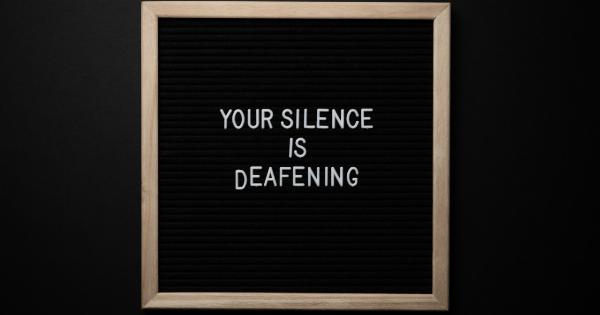Having cold eyes can be uncomfortable and may indicate an underlying health issue that deserves attention. While cold eyes can be caused by various factors, it is crucial to understand the potential causes and seek appropriate treatment.
In this article, we will explore the reasons your eyes may feel cold and discuss possible solutions to alleviate discomfort and address any associated health concerns.
Understanding the sensation of cold eyes
When we refer to cold eyes, we are not necessarily talking about the actual temperature of your eyes. Instead, we are referring to the sensation of coldness or a feeling of discomfort in and around the eye area.
This sensation may be accompanied by other symptoms such as itchiness, redness, dryness, or even pain.
While experiencing cold eyes occasionally may not be a cause for concern, persistent or recurring symptoms could indicate an underlying health issue.
It’s important to pay attention to these symptoms and discuss them with a healthcare professional.
Possible causes of cold eyes
There are several potential causes for cold eyes, ranging from environmental factors to systemic health conditions. Let’s take a closer look at some common reasons your eyes may feel cold:.
1. Dry Eye Syndrome
Dry Eye Syndrome occurs when the eyes fail to produce enough tears or the tears evaporate too quickly. This can result in discomfort and a sensation of coldness in the eyes.
Dry eyes are commonly caused by factors such as prolonged screen time, certain medications, aging, or environmental conditions like dry air or strong winds.
2. Allergies
Allergies, particularly seasonal allergies or hay fever, can lead to cold eyes. When you are exposed to substances like pollen, pet dander, or dust mites, your immune system releases histamine, leading to itchy, watery, and cold eyes.
Cold compresses and over-the-counter antihistamine eye drops or oral medications may offer relief for allergy-induced cold eyes.
3. Conjunctivitis
Conjunctivitis, commonly known as pink eye, is an inflammation of the conjunctiva, the thin tissue covering the white part of the eye.
This condition can be viral, bacterial, or allergic in nature, and it often causes redness, itching, discharge, and coldness in the eyes. Depending on the cause, conjunctivitis may require antiviral or antibiotic treatment.
4. Sinus Infections
When you have a sinus infection, the sinuses become inflamed and congested. This can lead to pressure around the eyes and a cold sensation. Sinus infections are often accompanied by symptoms such as headache, facial pain, or nasal congestion.
Treating the underlying sinus infection with antibiotics or decongestants can help relieve cold eyes associated with this condition.
5. Thyroid Disorders
Problems with the thyroid gland, such as hypothyroidism or hyperthyroidism, can affect various bodily functions, including tear production. Thyroid disorders can contribute to dry eyes, which may lead to a cold sensation.
Managing the underlying thyroid condition with medication and regular check-ups can help mitigate eye-related symptoms.
6. Raynaud’s Disease
Raynaud’s Disease is a condition that affects blood circulation, causing narrowing of the blood vessels in response to cold temperatures or stress.
While it typically affects the fingers and toes, some individuals may experience symptoms in the eyes as well, leading to a sensation of coldness. Keeping warm and managing stress can help minimize the occurrence and severity of symptoms.
7. Migraines
Migraines are intense headaches that often come with a range of symptoms, including sensitivity to light and cold sensations. Some individuals may experience cold eyes as part of their migraine aura or during the headache phase.
Managing migraines may involve lifestyle changes, identifying triggers, and taking medication as prescribed by a healthcare professional.
8. Sjögren’s Syndrome
Sjögren’s Syndrome is an autoimmune condition that primarily affects the salivary glands and tear ducts. It leads to dryness in the eyes and mouth, which can cause discomfort and a cold sensation.
Treatment for Sjögren’s Syndrome focuses on symptom management and may include artificial tears, medications, and lifestyle modifications.
9. Circulation Issues
Poor blood circulation, often associated with vascular diseases or conditions like diabetes, can affect blood flow to the eyes. Insufficient blood flow can make the eyes feel cold.
Regular exercise, maintaining a healthy diet, and managing any underlying health conditions can aid in maintaining proper blood circulation.
10. Anxiety and Stress
Anxiety and stress can have various physical manifestations, including cold eyes. When you are anxious or stressed, your body may react by constricting blood vessels, leading to a cold sensation in the eyes.
Engaging in stress-reducing activities and practicing relaxation techniques can help alleviate both the cold sensation and the underlying anxiety or stress.
When to seek medical help
If you frequently experience cold eyes accompanied by persistent or worsening symptoms, it is essential to consult a healthcare professional.
They can evaluate your symptoms, perform any necessary tests, and determine the underlying cause of your discomfort. Timely intervention and targeted treatment can prevent complications and provide relief from cold eyes.
Treatment and prevention strategies
Treatment options for cold eyes depend on the underlying cause. Here are some common strategies that can help alleviate discomfort and prevent cold eyes:.
1. Artificial Tears
If dry eyes are the primary cause, lubricating eye drops or artificial tears may provide relief. These can help moisturize the eyes and reduce the cold sensation associated with dryness.
2. Warm Compresses
Warm compresses can help improve blood circulation to the eyes and relieve coldness associated with circulatory issues or sinus infections. Applying a warm compress for a few minutes several times a day can provide soothing relief.
3. Allergy Medication
If allergies are the culprit behind your cold eyes, over-the-counter antihistamines or prescription medications can help control symptoms. These medications can reduce itchiness, redness, and the cold sensation associated with allergic reactions.
4. Prescription Medications
In cases where an underlying medical condition is causing cold eyes, your healthcare professional may prescribe specific medications to address the root cause.
Following the prescribed treatment plan can help alleviate symptoms and prevent the recurrence of the cold sensation.
5. Lifestyle Modifications
Simple lifestyle changes can also contribute to preventing cold eyes.
These may include avoiding excessive screen time, using humidifiers in dry environments, practicing good eye hygiene, staying hydrated, and protecting your eyes from environmental irritants.
6. Stress Management Techniques
If stress or anxiety triggers your cold eye symptoms, incorporating stress management techniques into your daily routine can be beneficial.
Consider activities such as exercise, meditation, deep breathing exercises, and relaxation techniques to manage stress and reduce the occurrence of cold eyes.
7. Regular Eye Exams
Scheduling regular eye exams with an optometrist or ophthalmologist is essential for maintaining good eye health. These professionals can detect and address potential issues early on, helping to prevent or manage conditions that may lead to cold eyes.
Conclusion
If you frequently experience the discomfort of cold eyes, it could be a sign of an underlying health issue.
Understanding the potential causes, seeking appropriate medical advice, and following recommended treatment strategies can help address the root cause of your cold eyes and provide relief. Remember to prioritize eye health and consult a healthcare professional for personalized advice and guidance.






























